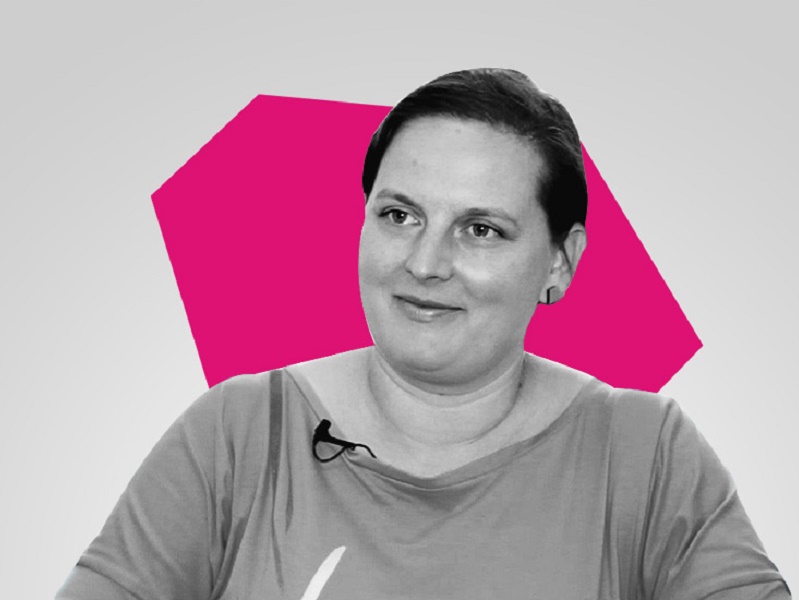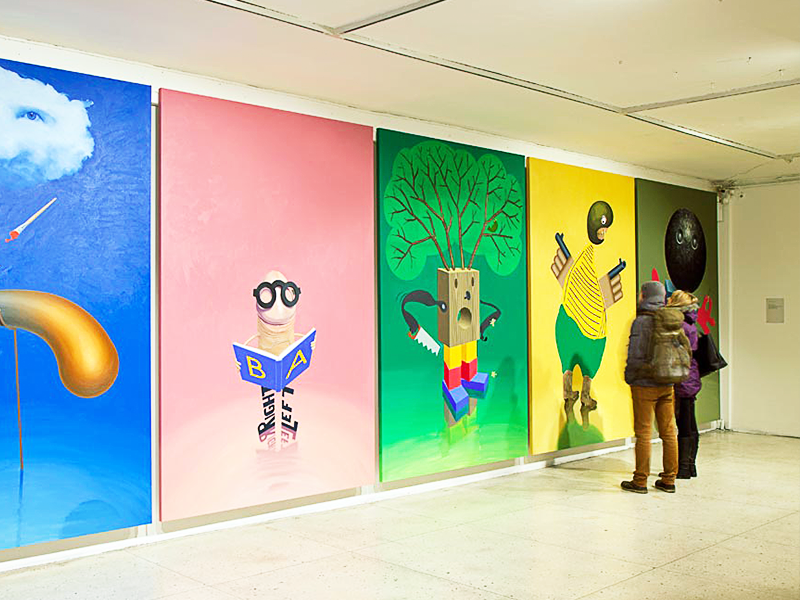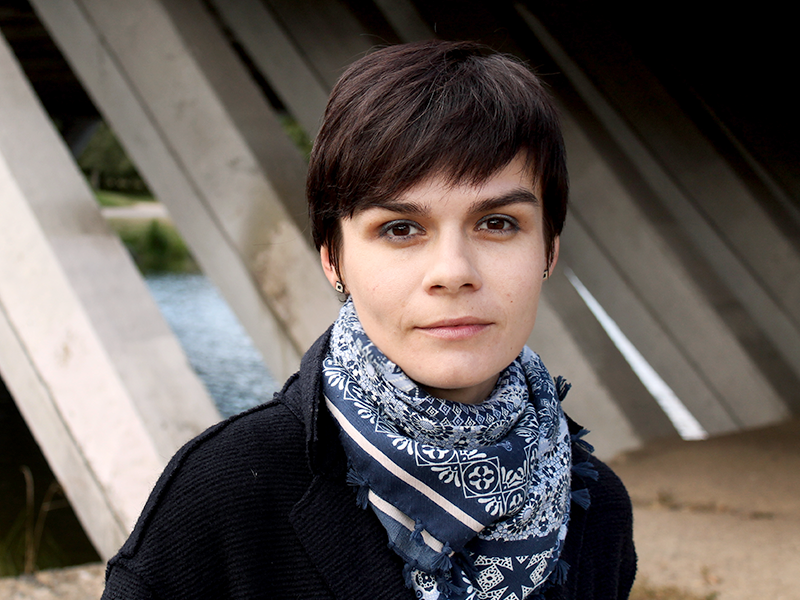
Alma Selimovic: “Culture is as important as medicine, science or education”
Could you please tell us about the Bunker Institute and about its projects?
Bunker Institute was founded in 1997 when many new cultural non-governmental organisations were emerging. This year we will be holding the festival for the 19th time and our activities have broadened significantly this time. Contemporary theatre and performing art are still our main focus though.
Since 2004 we have been holding the festival (Mladi levi) in quite an unusual venue: it’s an old power plant that has been converted into a theatre. The plant was modernised by the Ministry of Culture and the city authorities, and now it’s managed by a private owner. In fact, this centre serves contemporary theatre and dance: we offer the space for rehearsals, seminars and performances. In addition, we organise some 150 programmes every year: ranging from performances, seminars, concerts or visual projects.
Every 4–5 years, an open competition for directorship is held. Our third term managing the power plant is currently coming to an end.
We also have the Drugajanje festival in Maribor, which we organise in collaboration with a secondary school. A large part of its audience is students. We also try to carry out projects that do not directly related to the arts but are rather within the context of the arts. For example, in the area of cultural education. We develop many projects and programmes in cooperation with schools. We would like to enter the market of formal education with contemporary art too.

What exactly have you done in this area? What projects have you already implemented?
We discovered that in the curriculum of the Slovenian school system there are many things associated with art, but this is neither contemporary art nor practical knowledge. Rather, it is the study of art theories. Therefore, two of our priority areas are working with the programme and development of a contemporary art curriculum.
One of the projects within the framework of which we worked with 20 schools from all over Slovenia was called Theatre Platform. We had an opportunity to hire actors to do the teaching. Most of our attention was given to rural schools that have fewer opportunities to access cultural events.
We held training sessions where actors worked with teachers and students. For example, a teacher together with an actor would develop an entire lesson: so, a physics class was given by a physics teacher and a dancer, while a Slovenian language class was given by a Slovenian language teacher together with a theatre actor. Everything worked out well but there was no particular breakthrough. We really enjoyed holding three-day intensive courses for small groups though. Here, I believe, we were able to achieve something instead of just bringing a group to the theatre, watch a play and go home. You can do this only with very bold and determined teachers who are willing to give their time to that. Besides, we carry this out “in the field”, without any special financing; that is why everything rests on the shoulders of the festival team.
Do you plan on continuing this project in the future?
Yes, we continue our work and keep trying to find funding for a larger project. Of course, we are well motivated to carry on. After all, working with young people always bears fruit, you just need some time for that.
Teaching culture has its own limitations. For example, there are things that we don’t like, so we have to allow others to like or dislike them. This is particularly true for contemporary art (frankly, it can be quite controversial). You could come across something that you won’t like or understand. It is such topics that make contemporary art valuable for schools, I think.
Let’s talk about the developing relationships with the audience. Who is the audience for your projects, and what exactly do you do to expand it?
I don’t want to disappoint you, but our policy for audience building is inconsistent, I must admit. We don’t think about it as a separate thing when making up our programme. We try to develop relationships with the audience in different ways though.
Our audience is very wide, possibly because we undertake the most diverse projects from conferences to festivals of the most different scale. We are a producing and organising international company with many international projects under our belt, but we are located in a very small district in the centre of Ljubljana. We are where local meets global. And I believe this is precisely where our audience is: it can be the residents of our district who come because they’re interested in our programme and know us well.
From my perspective, we are trying to build an audience with all we’ve got. Despite our efforts being not very structured, we are trying not think about the audience in figures only. We are not preoccupied with numbers, but we do our best to attract each and every one who we think should really be with us. The fact that we’re succeeding at that is a great victory for me.
Why is it so important to build relationships with partners, and how do you do this?
We were always curious to see what was happening elsewhere, so the Bunker Institute has been an international festival from the very start. Throughout its existence, the festival has travelled all over the world.
All our partnerships organically weave into the concept of the festival’s development. We do not build them in greenhouse conditions, they are born naturally during international visits and communication with people, developing during our travels.
In most cases, quality of the partnership is reflected in the goal for the cooperation. If the goal is funding in itself, it won’t work, I think. To cooperate and hear other people, to see and explore something new, you have to feel the real need for it. If there’s a need, then you’ll find the opportunity.
Sometimes collaborations emerge from an internal desire for what can only be done with foreign partners. We participate in three programmes now, but the Create to Connect project, where we are the main partner, is really something to be proud of for us. It was the whole nine yards for us: we developed the project idea, submitted the application, and found 12 partners. With most of them, we have either worked previously or have known them and wanted to work with them for a long time.
We motivate partners to work together and engage with the audience while doing any kind of research work. At the moment, our collaboration is developing perfectly thanks to the freedom within the partnership network. Many partnerships have also been formed in the network, which is heartening for us to see.
The project ran for five years: I like to joke that I wrote the application when I was pregnant and we received the final round of funding when my daughter went to school. This is exactly how long-term projects work.

Could you offer a few tips on how to create a successful cultural project?
I’m not very good at giving advice or recipes (unless we are talking about cooking), but I’ll try nonetheless. The thing is that there’s no recipe for success as such. It’s like the Eurovision contest: if you try to do something similar to what you did the year before, you’ll definitely lose. The secret to success is thus as simple as that: you need to try and strike a balance between what you really want to do and the funding rules, selection criteria and other practical aspects.
With regard to submitting project proposals, as soon as you try to please the experts reading the proposal, you are doomed to fail. It just doesn't make sense to do what you don’t want to even if you get the money. So the important thing is to identify what you want to do in your application and find the right partners, I think. When you have partners and the main idea, that’s already half the battle. The rest is a question of tactics.
What matters too is solidarity and the understanding of local specifics. It could significantly complicate big projects if you have, say, 15 partners from 15 countries with radically different local contexts. For example, for a Western European organisation, participation in a project could be simply an additional bonus to the implementation of big projects, while for us it is a matter of financial survival.
So, one has to strike a happy medium between collaboration and the interests of the project’s partners?
Yes, it’s all about striking that balance. You can’t expect the same thing from all partners because, for instance, a small project can have a huge influence on local culture—it’s not about the scale. It is also important to understand the needs of the audience. Although it’s sometimes difficult, it’s important to implement international projects while taking into account local contexts—after all, we’re ultimately doing it “locally”, for instance, in Ljubljana.
Another tip is to hold many meetings, focusing not only on the pressing issues like logistics or funding. Allocate some time for what really is the reason for working together, i.e. content.
What impact can culture have on other spheres of life? Can it contribute to the development of cities and countries or help solve global challenges, for example?
There’s a legend here in Slovenia that our country is founded on culture since we have no rich political or military history. Of course, this is only a legend, but I think that people from the cultural sphere firmly believe in its importance. On the flip side, they constantly think about what culture should do to, for example, receive funding from the state.
That is why my expectations of culture are quite realistic: I believe that it is as important, as healthcare, science or education. It also has the valuable ability to convince us of the reality of any changes. I think this capability of art is due to its connection with people. For me personally, this is the only field, apart from human relations, that has a place for the sublime. And if there’s a place for beauty, then there’s a place for changes.
Although capable of all of this, culture still can destroy the world. While implementing all our projects, we saw changes take place quite slowly, and sometimes they just don’t happen. They may also take place much later than expected. And sometimes they’re so unnoticeable that we can’t really tell if they happened at all.
It’s a glimmer of hope that encourages us to move on. I wouldn’t go so far as to say that culture is an excellent tool for the development of international relations, diplomacy and establishing international partnerships, but we do see the fruits of our work. They lie in the fact that there’s a place for the sublime, cooperation passes the test of time and money and we continue to move forward. And all of our efforts are worth it.
“Culture matters” is a joint initiative by Platfor.ma and the EU-EaP Culture and Creativity Programme.
http://culturepartnership.platfor.ma/alma-selimovich/




